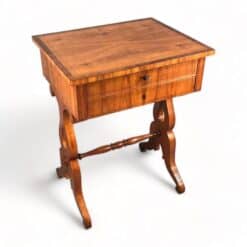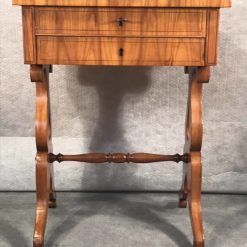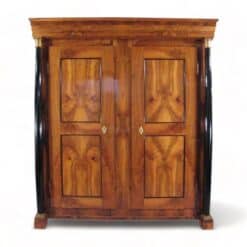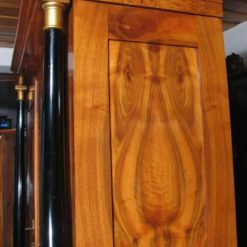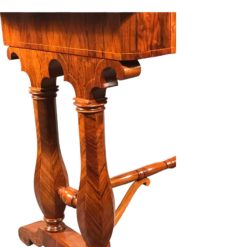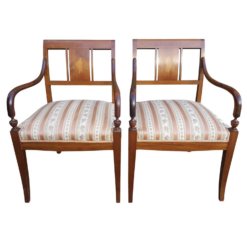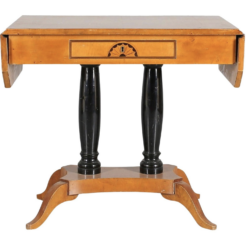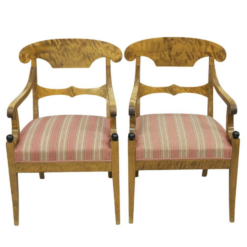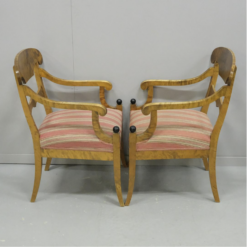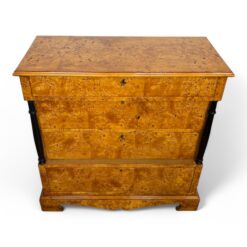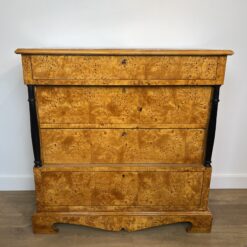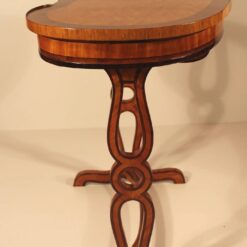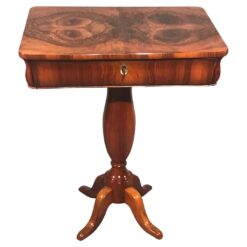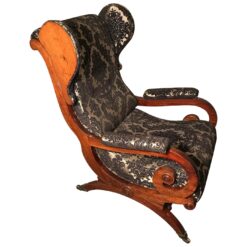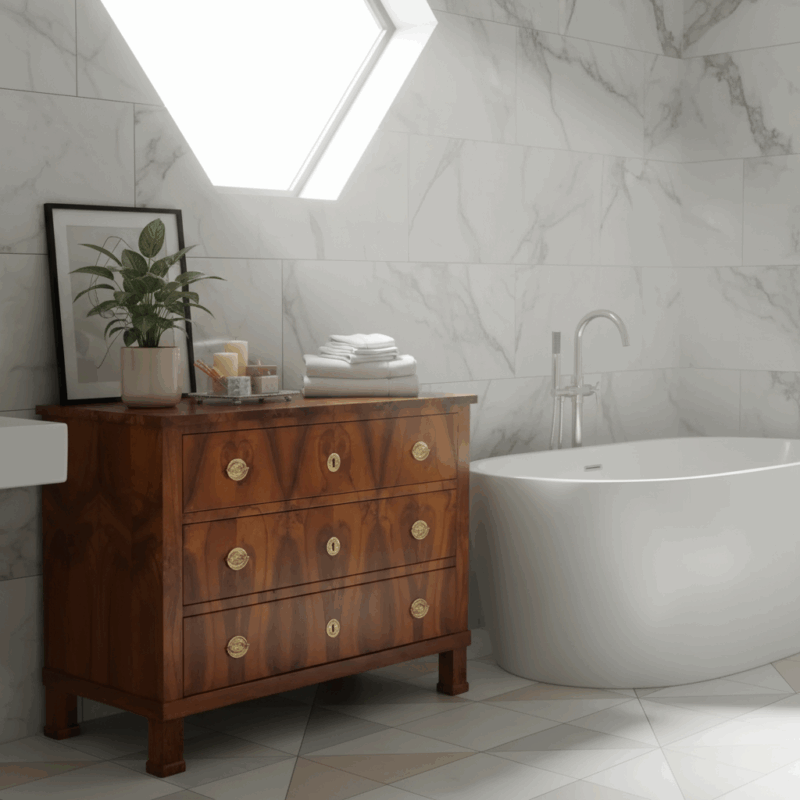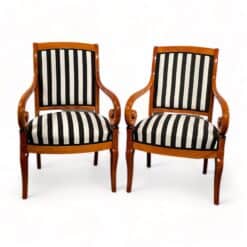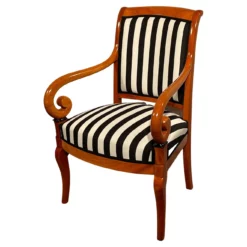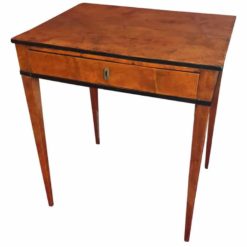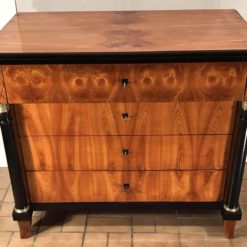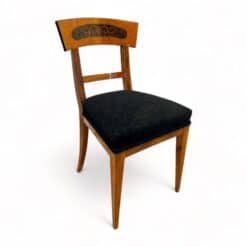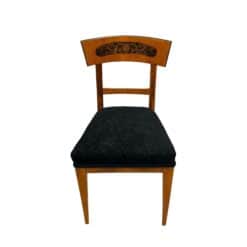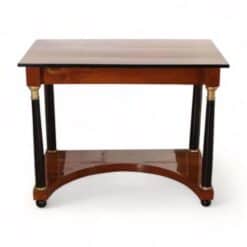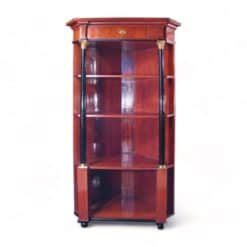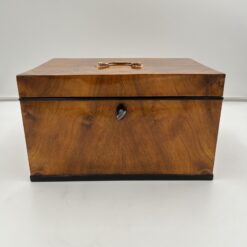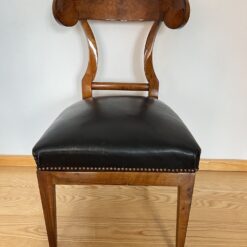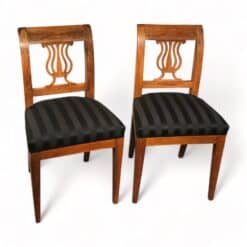Best Sellers
Antique Furniture Guide, Biedermeier, How-To & Inspiration
Elegant Utility: The Biedermeier Chest of Drawers and Its Enduring Appeal
The Biedermeier chest of drawers embodies the essence of early 19th-century design: elegant, functional, and thoughtfully proportioned. Emerging during a period of cultural refinement and social change, these chests tell a story not only of craftsmanship but also of shifting values — from aristocratic grandeur to the understated elegance of a growing middle class. Today, Biedermeier furniture continues to captivate collectors and interior designers alike for its versatility and timeless beauty.
A New Kind of Elegance
The Biedermeier period (1815–1848) began after the fall of Napoleon and marked a move away from the opulence of the Empire style. Society turned inward. Families placed greater emphasis on domestic comfort and tasteful restraint. In furniture, this change translated into simpler silhouettes, natural materials, and a focus on functionality — qualities that make Biedermeier design feel surprisingly modern.
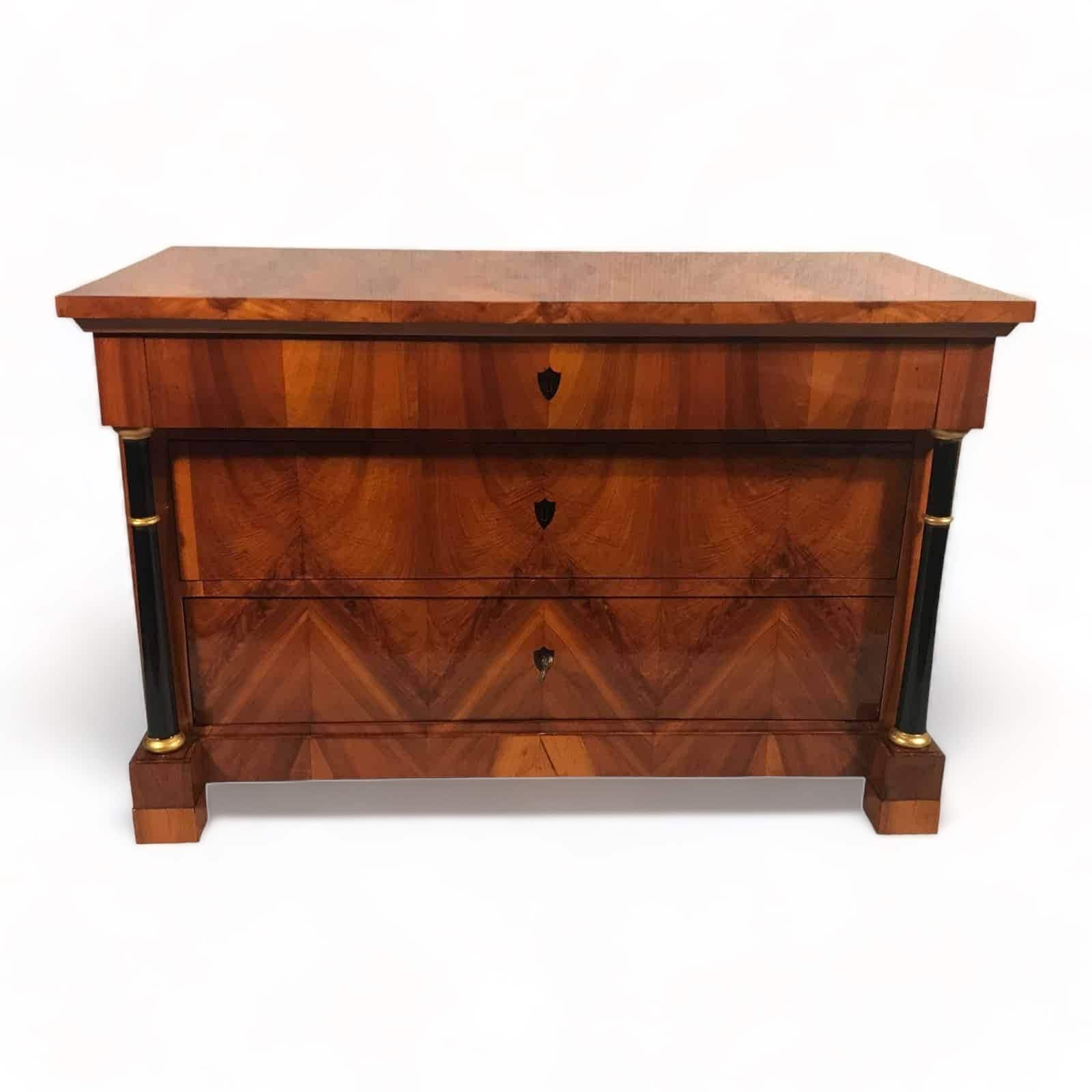
Among the most popular pieces of the period, the chest of drawers reflects this shift perfectly. Known for clean lines, fine veneers, and exquisite craftsmanship, Biedermeier chests were designed to blend beauty and practicality. Whether used in bedrooms, salons, or entryways, they offered ample storage without overwhelming a space.
From Commode to Chest of Drawers
The form evolved from the 18th-century commode, a more ornate chest often decorated with gilded bronze mounts, heavy carvings, and elaborate marquetry. Biedermeier designers stripped away these embellishments. Instead of ostentatious display, they favored polished wood surfaces and geometric balance.
Typically rectangular in shape, Biedermeier chests feature three to five drawers stacked in perfect symmetry. They rest on simple plinths or discreetly curved feet, their proportions carefully calibrated to achieve harmony. In place of decorative metal mounts, wood veneers provided the visual richness. The effect is one of quiet sophistication — a hallmark of the era.
The Beauty of Veneer
Veneer work is central to Biedermeier design. Cabinetmakers often used cherry, walnut, birch, or ash veneers to create smooth, glowing surfaces that highlight the natural grain of the wood. The contrast between light and dark veneers added depth and visual interest.
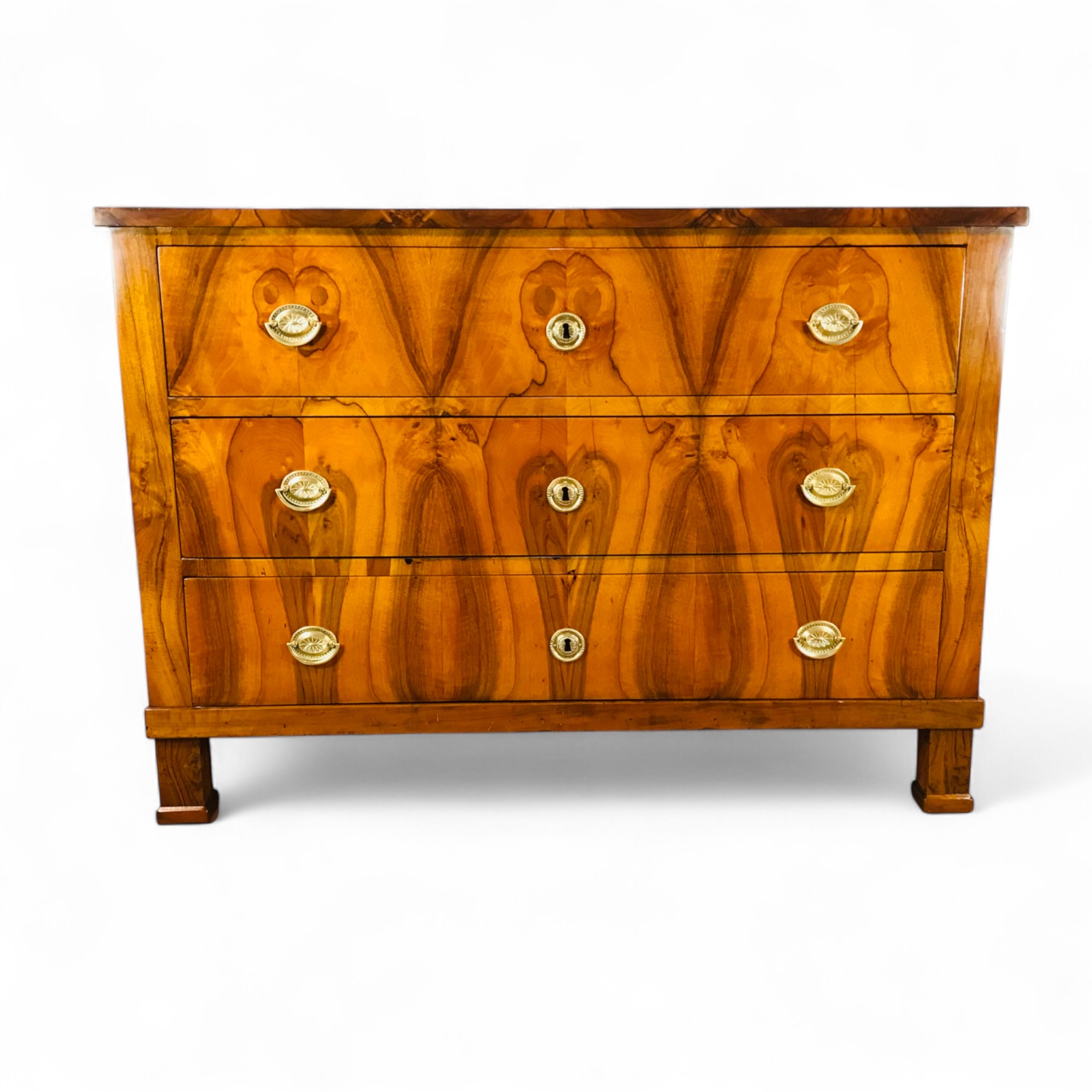
Veneer allowed artisans to express artistry through the material itself, rather than through added ornamentation. A masterful Biedermeier chest might feature book-matched veneers — mirrored grain patterns that form a striking symmetry across drawer fronts. This focus on the inherent beauty of wood gave the furniture a warmth that still resonates in contemporary interiors.
Typical Features of a Biedermeier Chest of Drawers
-
Symmetrical layout with three to five drawers
-
Polished cherrywood, birch, or walnut veneer
-
Minimal ornamentation with refined proportions
-
Plinth base or slightly curved feet
-
Subtle use of contrast and book-matched grain
Regional Variations
Although united by a shared aesthetic, Biedermeier furniture developed regional variations across Central and Northern Europe.
In Vienna, the center of refinement, chests of drawers displayed superb craftsmanship and a delicate sense of proportion. Viennese cabinetmakers often used light-colored cherrywood and elegant curved details.
In Northern Germany, artisans preferred sturdier forms and darker woods, such as walnut or mahogany, giving their chests a more grounded appearance.
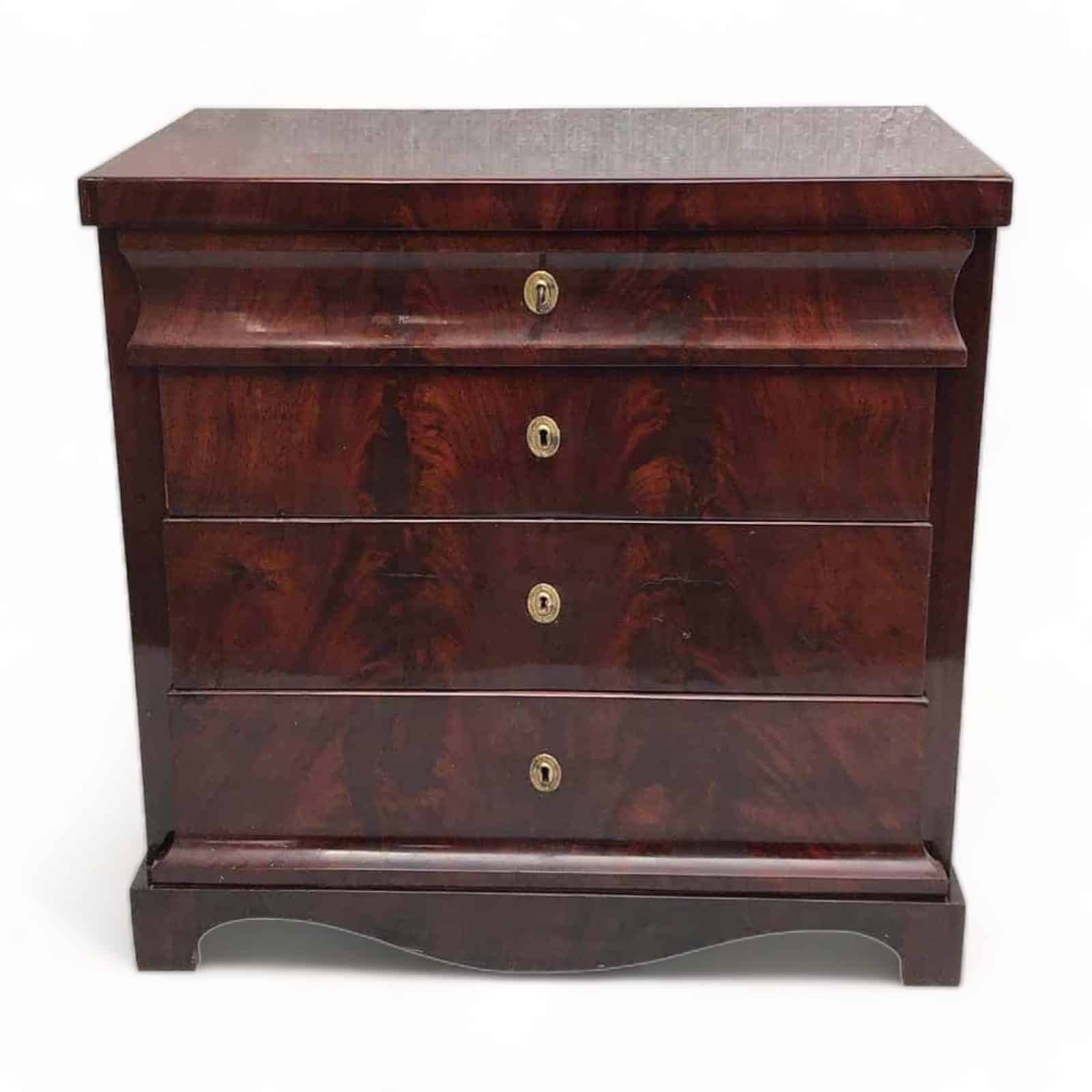
Scandinavian Biedermeier, particularly Swedish pieces, reflected the region’s affinity for lighter tones and simplified design. Pine or birch was commonly used, often painted or lightly stained. These regional nuances make Biedermeier furniture a fascinating field for collectors, offering insight into local taste and cultural exchange in 19th-century Europe.
A Reflection of Middle-Class Taste
Biedermeier furniture reflects a unique social moment. The growing urban middle class sought comfort, refinement, and modest luxury. Interiors became places of family life and personal expression rather than public display.
The chest of drawers suited these domestic ideals perfectly. It was practical — a place to store clothing, linens, or documents — yet beautiful enough to stand proudly in the home’s main rooms. The Biedermeier period thus democratized good design, making fine craftsmanship accessible beyond the aristocracy.
Adapted for Modern Living
The appeal of the Biedermeier chest of drawers endures because of its simplicity and adaptability. Its clean geometry complements both traditional and contemporary interiors. In a minimalist space, a Biedermeier chest introduces warmth and texture. In a historic setting, it bridges different eras gracefully.

Designers often use Biedermeier pieces as anchors — their calm presence offsets bolder elements such as modern art, sculptural lighting, or colorful textiles. A veneered cherrywood chest under a contemporary mirror, for example, creates a dialogue between past and present that feels effortlessly sophisticated.
Identifying Authentic Pieces
Authentic Biedermeier chests are typically handcrafted with precision joinery and fine veneers laid over solid wood. The craftsmanship is meticulous — drawers glide smoothly, corners align perfectly, and proportions feel balanced.
Look for:
-
Simple silhouettes with minimal carving or metal mounts
-
Symmetrical veneer grain or book-matching
-
Natural shellac or French-polish finishes
-
Dovetail joints and hand-planed surfaces
Later reproductions, especially from the early 20th century, often imitate the look but lack the refinement of original pieces. Authentic examples carry the patina of age — a soft glow and subtle wear that only time can create.
Restoration and Care
Many Biedermeier chests have been restored over time, especially to revive their veneer surfaces. When restoration is done sensitively, it can enhance both the appearance and longevity of the piece.
Avoid heavy sanding or synthetic varnishes, which can diminish the depth of the original veneer. Instead, natural waxes or shellac polishes maintain the wood’s luster. Because veneers are delicate, humidity control is essential. Keeping the piece away from direct heat or sunlight will help prevent cracking or lifting.

Why Collectors Love Them
Collectors value Biedermeier chests of drawers for their quality, aesthetic restraint, and adaptability. They represent a high point of European cabinetmaking, where craftsmanship met modern sensibility. Each piece tells a story — of an artisan’s hand, a family’s life, and a time when simplicity became the new form of luxury.
Their enduring appeal lies in this balance. A Biedermeier chest is functional yet poetic, historical yet current. It embodies the very spirit of the movement — finding beauty in honest materials and elegant proportion.
The Biedermeier Legacy
Today, the influence of Biedermeier design extends far beyond antiques. Its principles — clarity of form, appreciation of natural materials, and understated refinement — continue to inspire modern furniture makers. In an age that values craftsmanship and sustainability, the Biedermeier ideal feels more relevant than ever.
Owning a Biedermeier chest of drawers is more than owning a beautiful antique. It’s a way of connecting with a tradition that shaped modern interior design. In every polished surface and seamless drawer lies the quiet confidence of timeless craftsmanship — and the enduring appeal of elegant utility.
Discover our authentic Biedermeier chests of drawers and explore how 19th-century craftsmanship can bring warmth and balance to a modern interior.

